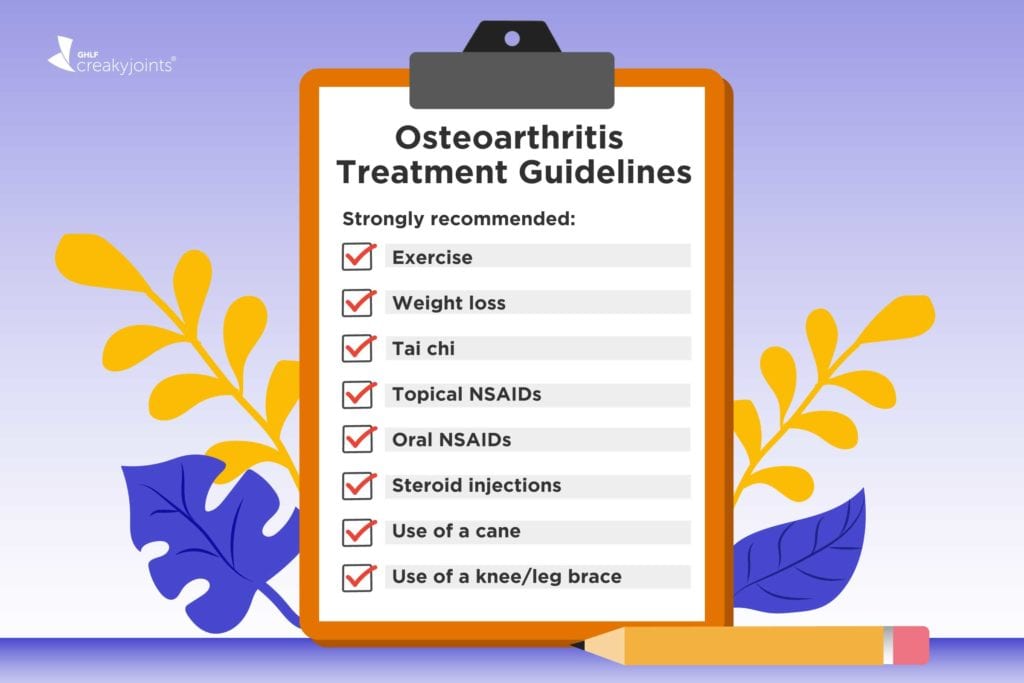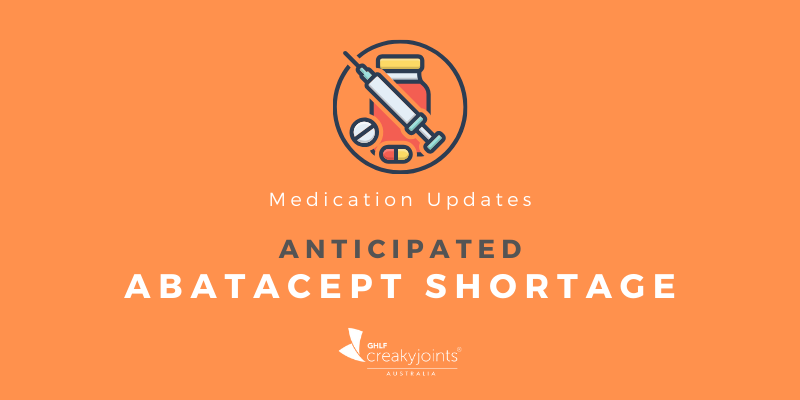

Osteoarthritis (OA), a “wear and tear” condition that occurs when the cartilage that cushions joints breaks down over the years, is very common. If you develop it, your doctor will most likely recommend NSAIDs (non-steroidal anti-inflammatory drugs) like ibuprofen or naproxen to ease joint pain and stiffness. Sometimes that treatment strategy suffices, but when it doesn’t there are other treatments to consider. Which ones are really worthwhile?
Official guidelines from the American College of Rheumatology (ACR) provide some direction — especially for a kind of arthritis that doesn’t have proven disease-modifying drugs as part of its therapeutic regimen. While medications for other types of arthritis, such as rheumatoid arthritis, can help stop the disease from getting worse and causing system-wide damage, OA treatment is generally more about managing symptoms to help maintain function in the affected joint.
Earlier this year (January 2020), the organisation updated this document — which was last released in 2012 — after reviewing the scientific literature on OA treatment that’s come out in the past few years. The current version appears in the journal Arthritis Care & Research.
While guidelines from medical organisations often rank the effectiveness of treatments relative to each other and encourage providers to start with a “first-line” modality and, if necessary, move up the ladder in a specific order, the new OA guidelines aren’t like that. Instead, they’re designed more like a menu from which patients and providers can choose one or more approved items.
“Patients with osteoarthritis can vary quite a bit in how the disease affects them. They might have a single joint, a few joints or many joints that are involved where symptoms can occur throughout adult life,” rheumatologist Sharon Kolasinski, MD, lead author for the guideline update, said in a press release. “Clinicians and patients can choose from educational, behavioral, psychosocial, mind-body, physical and pharmacological approaches.”
To update the guidelines, five teams — including rheumatologists, occupational therapists, and, for the first time, patients — reviewed the results of evidence from numerous OA studies that have been published in the past few years. Some of the recommendations from the 2012 version are still included, but several notable changes were made.
The guidelines are broken down into categories by the strength with which they are recommended. Here are some key takeaways you should know about if you’re a patient with osteoarthritis.
Strongly recommended:
- Exercise, especially for knee and/or hip OA
- Weight loss for knee and/or hip OA if you’re overweight or obese
- Tai chi for knee and/or hip OA (previously a conditional recommendation)
- Topical NSAIDs for knee and/or hand OA (previously a conditional recommendation)
- Oral NSAIDs for knee and/or hip OA (previously a conditional recommendation)
- Steroid injections for knee and hip OA (previously a conditional recommendation)
- Self-efficacy or self-management program for knee, hip and/or hand OA (previously a conditional recommendation)
- Use of a cane or hand support device for OA in the wrist
- Use of brace for knee OA
Conditionally recommended (limited evidence in favour of):
- Balance exercises or yoga for knee and/or hip OA (new)
- Duloxetine for knee OA (new)
- Cognitive behavioural therapy for knee OA (new)
- Radiofrequency ablation or kinesiotaping for wrist or knee OA (new)
- Topical capsaicin for knee OA (previous guidelines advised against)
*Not* recommended:
- Glucosamine and chondroitin supplements for knee and hip OA (strongly not recommended on the basis that they failed to show adequate benefit to justify their use – previous guidelines were conditional against these)
- Hyaluronic acid injections for hip, wrist and knee OA (new/strongly not recommended for hip OA)
- Transcutaneous electric nerve stimulation (TENS) for knee and hip OA (strongly not recommended; previous guidelines conditionally supported)
- Manual therapy with exercise for knee and hip OA (previous guidelines conditionally supported)
- Bisphosphonates, hydroxychloroquine and methotrexate (strongly not recommended)
- Platelet-rich plasma (PRP) injections for hip and knee OA (strongly not recommended)
- Stem cell injections for hip and knee OA (strongly not recommended)
- TNF inhibitors and interleukin-1 receptor antagonists (strongly not recommended)
While having so many options to choose from might seem overwhelming, OA experts say that personalisation is key to good care.
“We need to think about, for each individual, what are the puzzle pieces that should go together to help manage their osteoarthritis?” Tuhina Neogi, MD, PhD, a member of the group that developed the new guidelines, said in a presentation about the guidelines during the 2019 annual meeting of the American College of Rheumatology. “There’s no one size fits all for patients.”
Discussion between patient and provider is also essential, as noted by the authors of the guidelines: “Clinicians and patients should engage in shared decision-making that accounts for patients’ values, preferences and comorbidities,” they wrote. “These recommendations should not be used to limit or deny access to therapies.”
Keep Reading
- Arthritis Treatments
- Patient Guidelines
- How Well Do You Know Your Medications? Are You at Risk of an Overdose?
Sources
American College of Rheumatology/Arthritis Foundation Release Updated Treatment Guideline for Osteoarthritis. American College of Rheumatology. January 7, 2020. https://www.rheumatology.org/About-Us/Newsroom/Press-Releases/ID/1078
Campbell P. Osteoarthritis Guidelines Highlight Scientific Progress, Lack of Options. MD Magazine. November 9, 2019. https://www.mdmag.com/conference-coverage/acr-2019/osteoarthritis-guidelines-scientific-progress-lack-options
Kolasinski S, et al. 2019 American College of Rheumatology/Arthritis Foundation Guideline for the Management of Osteoarthritis of the Hand, Hip, and Knee. Arthritis Care & Research. January 2020. doi: http://dx.doi.org/10.1002/acr.24131
Updated OA management guideline emphasizes multimodal approach. ACR Daily News. https://www.acrdailynewslive.org/draft-of-updated-oa-management-guideline-emphasizes-multimodal-approach




